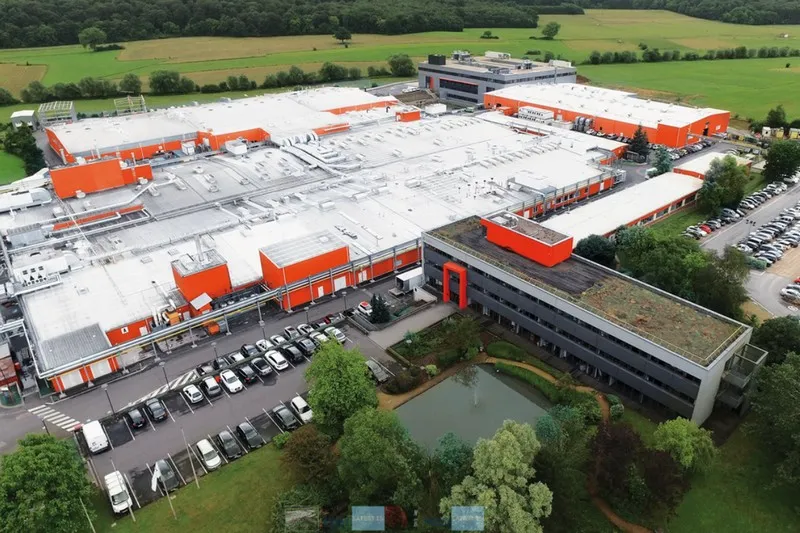

Your digital maturity on a scale of 0 to 100
Assessing your digital maturity can uncover business gaps, turning challenges into growth opportunities, and improves awareness of where your organisation stands. A first L-DIH assessment offers manufacturing companies much more.
 Abigail Okorodus
Abigail Okorodus
21/05/2024
How well do you think your company is leveraging digital tools and data to drive efficiency, innovation and customer satisfaction? Since 2023, the Luxembourg Digital Innovation Hub (L-DIH) proposes an initial digital maturity assessment to help manufacturing companies measure the digital maturity levels of their enterprises.
This baseline assessment is a first step in the digital transformation path, allowing manufacturers to analyse the existing condition of their organisation's digital capabilities. This allows them to assess how they compare to more than 4,000 other Luxembourg and European players, and it also helps to identify the strengths, weaknesses, opportunities, and gaps in their operations, laying the groundwork for informed decision-making and targeted interventions in the future.
Within the L-DIH consortium, which consists of five members, the University of Luxembourg is responsible for delivering this assessment with the support of Luxinnovation. “To kickstart the digital maturity assessment, companies can contact the L-DIH consortium. The process typically begins with a visit by the L-DIH team to get a first impression of the production facilities. Following this, the team conducts the assessment, usually lasting around two hours,” indicates Mr Clemens-Stolbrink. “We also recommend that several colleagues representing the core functions of organisation are included as the companies deem appropriate,” he adds.
The digital maturity assessment covers six dimensions of an organization such as digital business strategy, digital readiness, the human aspect, data, automation and intelligence as well as green digitalisation.
“The related discussions when performing the Digital Maturity Assessment typically open the corridor for additional digital support services available through the L-DIH consortium” Mr Clemens-Stolbrink highlights. Those services range from deeper OT, cybersecurity, skills & training assessments, up to technology testing and workshops supporting companies in their development of a sustainable digital roadmap.
For Dr Kolla, the answer is clear: “Relevance. Digitalisation ensures that you’re relevant for today.” He explains this in terms of convenience, operations, sustainability and energy efficiency. “You could track your energy data, sustainability indicators, workplace safety and security, and improve your productivity and efficiency. These are the things that make you relevant for today, and why companies should opt for digitalisation,” he emphasises.
“This is where the L-DIH digital maturity evaluation comes into play. It helps to streamline ideas and identify key actions that will provide value to you, and set your roadmap,” he concludes.
This baseline assessment is a first step in the digital transformation path, allowing manufacturers to analyse the existing condition of their organisation's digital capabilities. This allows them to assess how they compare to more than 4,000 other Luxembourg and European players, and it also helps to identify the strengths, weaknesses, opportunities, and gaps in their operations, laying the groundwork for informed decision-making and targeted interventions in the future.
“Essentially, the assessment consists of a series of questions based on a methodology developed by the European Commission. We chose this technique because it is sector-independent and provides a framework for standardising and comparing outcomes across sectors,” explains Joachim Clemens-Stolbrink, Luxembourg Digital Innovation Hub Manager at Luxinnovation.Digitalisation ensures that you’re relevant for today.
Sri Kolla, Research Project Officer, University of Luxembourg
The digital maturity assessment process
Within the L-DIH consortium, which consists of five members, the University of Luxembourg is responsible for delivering this assessment with the support of Luxinnovation. “To kickstart the digital maturity assessment, companies can contact the L-DIH consortium. The process typically begins with a visit by the L-DIH team to get a first impression of the production facilities. Following this, the team conducts the assessment, usually lasting around two hours,” indicates Mr Clemens-Stolbrink. “We also recommend that several colleagues representing the core functions of organisation are included as the companies deem appropriate,” he adds.The digital maturity assessment covers six dimensions of an organization such as digital business strategy, digital readiness, the human aspect, data, automation and intelligence as well as green digitalisation.
After the evaluation, the organisation receives a thorough benchmark report detailing the main results, with a score for each dimension ranging from 0 to 100%. “It is a great exercise to immediately discover low-hanging fruits that manufacturers can immediately improve as well as those that require some more time,” points out Dr Sri Kolla, Research Project Officer at the University of Luxembourg.The assessment consists of a series of questions based on a methodology developed by the European Commission.
Joachim Clemens-Stolbrink, Luxembourg Digital Innovation Hub Manager, Luxinnovation.
“The related discussions when performing the Digital Maturity Assessment typically open the corridor for additional digital support services available through the L-DIH consortium” Mr Clemens-Stolbrink highlights. Those services range from deeper OT, cybersecurity, skills & training assessments, up to technology testing and workshops supporting companies in their development of a sustainable digital roadmap.
Why digitalisation matters for manufacturers
For Dr Kolla, the answer is clear: “Relevance. Digitalisation ensures that you’re relevant for today.” He explains this in terms of convenience, operations, sustainability and energy efficiency. “You could track your energy data, sustainability indicators, workplace safety and security, and improve your productivity and efficiency. These are the things that make you relevant for today, and why companies should opt for digitalisation,” he emphasises.
According to him, there are two primary drivers for companies adopting new digital technologies: industry push and market pull. Industry push occurs when a company recognises a clear need for technological advancement within its operations, such as upgrading outdated software or monitoring machine health. Market pull, on the other hand, is driven by the fear of being left behind if competitors adopt new technologies first.A great exercise to immediately discover low-hanging fruits that manufacturers can immediately improve.
Sri Kolla, Research Project Officer, University of Luxembourg
“This is where the L-DIH digital maturity evaluation comes into play. It helps to streamline ideas and identify key actions that will provide value to you, and set your roadmap,” he concludes.







